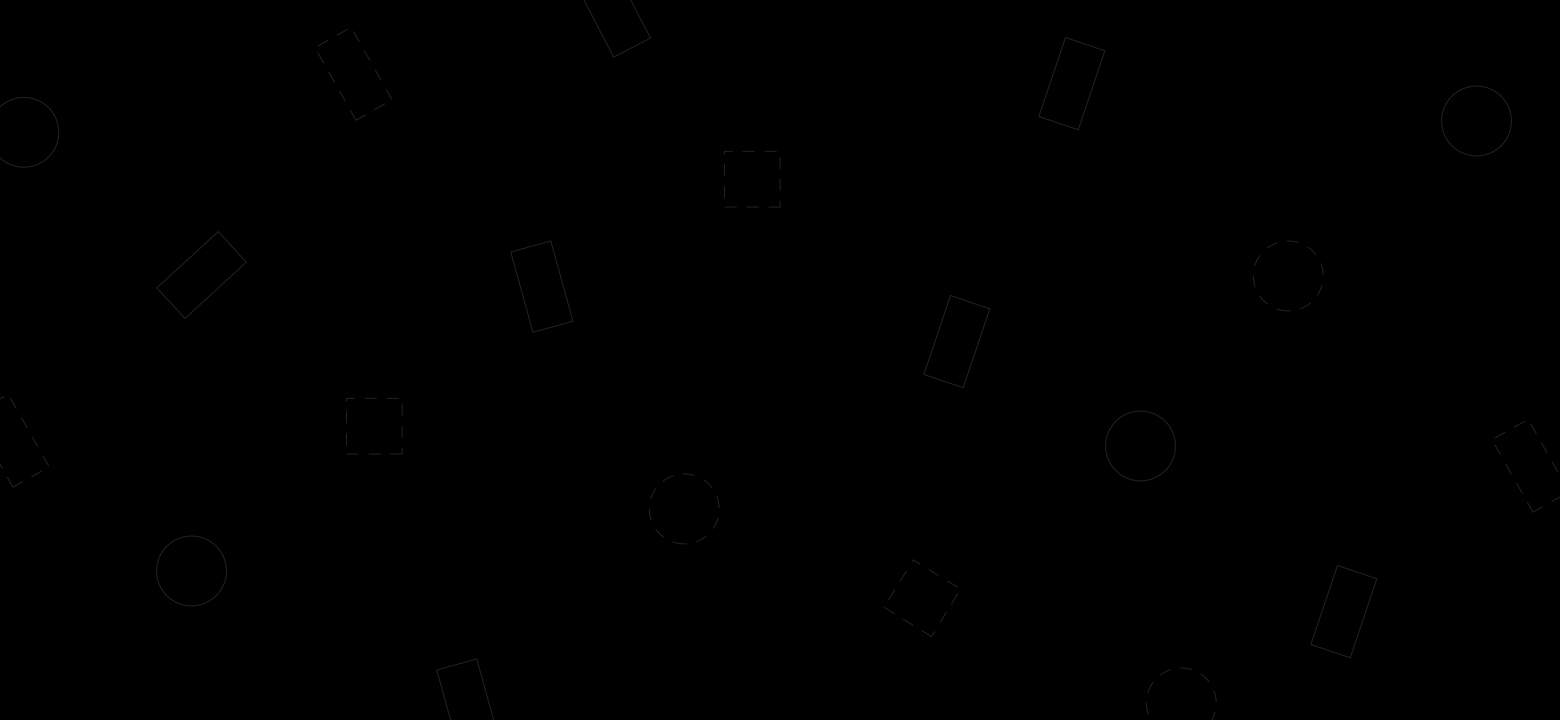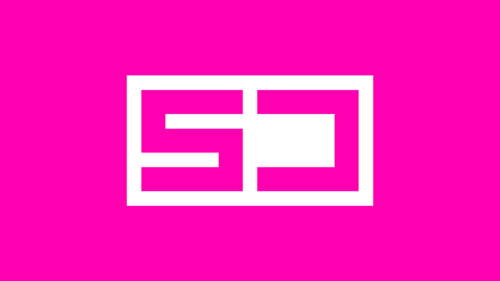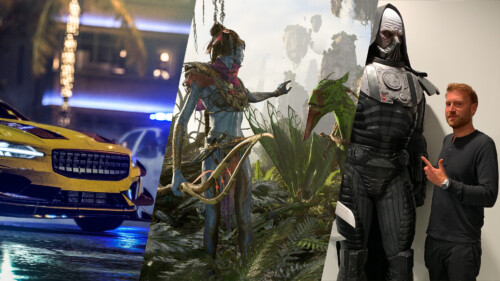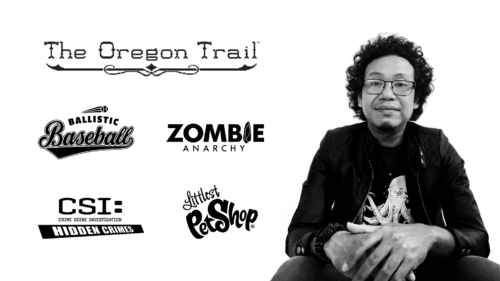Interview with Dorian Stewart
UI Designer at Ninja Theory


Introduction
Hi there! My name is Dorian Stewart and I am a Canadian designer currently stationed in Cambridge, UK, where I am serving as Ninja Theory’s UI Designer. Previously, I spent over a decade making (and leading teams making) user interfaces for video games within the portfolios of Electronic Arts, Microsoft, Activision, Digital Extremes, and Nintendo, among others.
How did you start in the industry?
My origin story is actually somewhat unexpected in the sense that I have absolutely no art background whatsoever. My entire area of focus growing up was on languages, with the intention of becoming an interpreter. In my teenage years, just as I was beginning to shift my focus towards Arabic, with what, at the time, was ever-growing geopolitical interest in the Middle East, a friend sent me something over MSN Messenger that forever changed my trajectory in ways I could have never imagined; a pirated copy of Photoshop.
I’ve pretty much never looked back since then to be honest. I remember spending hours upon hours manipulating images in both serious and humorous ways, learning the tools as I went along. It became a bit of an obsession, and at some point, I realised I would have to abandon my previous goals if I wanted to make a living doing what actually brought me the most joy.
With little time left before turning 18 and leaving the nest, I scrapped everything I had been working towards academically, and decided to pursue a post-secondary education in Graphic Design.
I ended up entering an incredibly intensive one-and-a-half year course at The Art Institute of Vancouver, where I actually nearly flunked my first quarter that was focused on ‘traditional’ art due to lacking any previous education in that area. I felt completely incompetent, I had no sense of belonging, and to be honest, it really made me question my decision, and the risk I had taken to be there.
However, I held on, and as soon as we moved to digital work in the next quarter, the situation completely reversed, and all of my previous experience in Photoshop started to really pay off, and I was finally able to find my groove for a while.
However, as we neared graduation, where I ended up struggling again, was finding an area of specialisation for myself within the fairly wide field of Graphic Design.
It surfaced enormous amounts of anxiety and doubt in myself to see all of my peers gravitate towards established areas like Editorial Design, Corporate Identity, or even Web Design, and not quite feeling like I had a place to call home.
This however, only took one moment to completely change.
I’ve been an avid gamer for as long as I can remember, with my first memories dating back to playing NHL 95 on the SNES.
On this one evening however, it was a Codemasters game titled Operation Flashpoint: Dragon Rising, that I brought home from the shop, and installed on my computer.
I very clearly remember the game opening with an intro video that quite literally made my jaw drop. The graphic design featured front-and-centre was absolutely stunning. As I entered the Main Menu, the style permeated, and it not only made me realise that good graphic design had a place in video games, but more importantly, I remember having a sudden epiphany that a graphic designer was behind this, that this was a profession that some person had, and ultimately…that I wanted to be that person.
It seems like an odd thing in retrospect, but back in the day, knowing a niche line of work like “Video Game UI Designer” even existed, let alone what the path to becoming one involved, was not widely known.
After that turning point, without any formal training on the subject, and with little time remaining, I rapidly pivoted as much of my coursework as I could towards interface design.A couple weeks after graduating, with what I had managed to cobble together, and a portfolio mostly composed of traditional graphic design pieces like magazines and logos, I was somehow lucky enough to secure my very first position as a UI Designer with Electronic Arts, working on sports titles.
Funnily enough, to go full circle, I actually ended up getting put on NHL on my very first day. The following day however, after completing my first ever game icon, I was informed there had been a mistake, and I was assigned to a different team. So I packed up my things, moved to my new cubicle, and thus began the great adventure.
As they say; “the rest is history”.
What are your responsibilities at Ninja Theory?
I’m in an incredibly privileged and unique position at Ninja Theory where I am the only designer in the entire studio. So although my official title is “Expert UI Design Ninja” and I indeed spend the majority of my time on UI (/UX) Design, I have two other ancillary areas of focus within the studio: Accessibility, and Marketing Graphic Design.
As an example, in a given day, it would not be unusual to spend a morning mocking up game menus in Photoshop, and then in the afternoon shifting over to working on a Development Diary video where I would be responsible for both designing the title cards, and their animations in AfterEffects, and also on the accessibility front, coordinating the production of closed-captions and narration assets to be published with the asset.
I absolutely love being able to work on so many things, and it’s a very rewarding position to be able to exercise design skills over so many mediums. It does however take an amazing support network (which I am very lucky to have) to ensure it doesn’t get too crazy with so many things coming in from so many different directions at once.
What is the favorite part of your job and what is the hardest part of your job?
Haha….as someone with…fairly…pronounced OCPD, I can not stress how lucky I am to have found a line of work where I essentially get to organise things all day long.
The aspect in particular of making original UI that brings me the most satisfaction though, is the period of time transitioning from the highly-creative ‘research and ideation phase’, into a phase involving bringing everything together and starting to develop design systems that visually and structurally harmonise all of these scattered ideas into a solid, rule-driven foundation to build the rest of the UI upon. This stage really represents a never-ending process of improvement and refinement as you go through it for every new game, but there is also a distinct feeling of reward with every new title, as you sense yourself getting closer and closer to ‘nailing it’.
On the opposite end, the most difficult aspect has to be, without almost any doubt, the socio-political aspects of the job, especially compounded by positions of team leadership, and even further by obligations to either publishers and/or external development partners. What makes this so difficult compared to design challenges is the direct human component in these situations. The stakes are so much higher when you are talking about ensuring the well-being of the people you are serving. Arguments about a button being ‘a couple pixels off’ to the left or right seem almost absurd in comparison to some of the situations you need to navigate as a leader in a sometimes not fully matured industry. There’s no silver bullet here either, and in a lot of cases, the best you can do is, through experience, and introspection, gain a deep understanding of your core values, and work really hard to find a company that feels the same.
Where do you get your motivation and inspiration?
To be honest, I think that especially ‘inspiration’ is a notion that represents in a lot of ways, what separates commercial work from personal pieces.
I tend to think about UI Design a lot more as engineering than as ‘art’ in that sense. In a business setting, where you need to predictably deliver, putting yourself in a position where you are dependent on ‘divine inspiration’ to be able to create high quality work, puts you and your team in a position of very high-risk.
On the flip side, a highly-important quality is having the experience and taste to know exactly what to mix and match in creative ways, and what needs to be invented, in order to serve the specific strategic goals of the product.
Because each title is different, these can drastically differ from game-to-game, so there’s not always a single-best source. With that said, it always pays to dig deep to find opportunities that others facing similar challenges may have not yet considered; increasing your chances to stand out from the competition.
I feel somewhat similarly about ‘motivation’ or even the concept of ‘passion’ that gets thrown around a lot. I believe it is far more important to have a strong work ethic than it is to rely on passion to drive you.
I think a big part of being a professional is the ability to, no matter how motivated you feel, focus on coming in and putting in an honest day’s work. As a result of doing that, both massive progress, as well as great professional growth will naturally occur.
The approach is very similar to compound interest in an investment account; it’s not immediately exciting or glamorous, but over time, the results are immense.
What does your screen-creation workflow typically look like?
I tend to follow a process very similar to Aaron Draplin’s workflow for creating logos, but performed on a screen-scale. I always start with a significant dose of research, and actually start with text before even starting to work with anything visual. Once I feel I am educated enough on the context and what I need to achieve, only then I will start sketching out ideas, and just generally try to generate as many variations I can think of with a ‘no bad ideas’ mindset.
As soon as I sense that I have explored enough avenues, I will then select the ones that I feel have the most potential, and start digitising them in Wireframe form, to then repeat the process of iteration once more.
It is only after then that I will start to bring the top candidates into Photoshop to begin the process of transforming the screen into a high-fidelity visual. Here once again, I will typically go through versions upon versions of adjustments until it is resolved. It is not unusual for a highly-critical HUD piece for example, to go through over 100 significant revisions.
Once the static pieces are ‘complete’, if necessary and/or time-permitting, a motion-demo can also go a really long way in demonstrating the vision for the piece.If you are interested in seeing what this entire workflow looks like in practice, this time-lapsed example shows the process from start to finish.
Beyond that, as a final step you should also be looking to take the time to document your designs in writing. It is paramount to reducing friction with whoever you will be collaborating with on the feature, and also serves as a crucial memory aid when revisiting designs down the line. Having a solid record of intention and rules, that you likely will not remember over time will be invaluable.
Of all the projects you/your company have produced, which one are you the most proud of? Do you want to highlight something from the project?
In addition to developing Hellblade 2, and Project: MARA, our third endeavour at Ninja Theory, The Insight Project, is unlike anything I have ever worked on before since I’ve been in the industry. To give you some context, The Insight Project is actually a lot more of an R&D project than a traditional ‘game’. We’re a compact group of developers working directly with a team of researchers at the University of Cambridge, and our collective goal is to essentially combine game technology with neuroscience to help make advancements in the field of psychiatric research, with the ultimate aim of reducing mental suffering.
In terms of what’s so fascinating about it from a UI perspective; at the moment, we are actively focused on developing software for our researchers to use in the context of clinical experiments to be conducted in a closed laboratory, which represents a significant amount of incredibly unique challenges.
First and foremost, it’s been a huge paradigm shift transitioning from making interfaces meant to be used used by millions of players, to at the moment, an application which will be used by only a handful of scientists, who, as a demographic to target, have a completely different profile than the ‘gamer’ cohort we are usually so used to designing for. It’s been an absolute pleasure working with them, and discovering how we can create an experience that goes beyond anything they are typically used to seeing in their field.
This point, in fact, is precisely where the second most exciting aspect lies. Generally speaking, medical equipment currently in circulation tends to severely lack in areas where video game UI, in contrast, typically excels at; so there is a massive opportunity for us to raise the industry bar in terms of visual fidelity and user experience, to a much higher level, which we feel our researchers deserve.
Lastly, it’s been an incredible learning experience as we collaborate with experts in their fields, and getting the opportunity to work with highly-specialised equipment, such as ‘BioRadio’ devices, used to collect biometric data with an incredible degree of precision, and taking on the challenge of finding the best ways to translate all of these raw sources into a format in the UI that is both highly-usable, and that (hopefully!) provides a certain degree of delight to our researchers.
I wish I could share even more, but here’s a small taste of some of the exciting things we’ve been working towards that I’ve been particularly proud to have played a part in developing. Stay tuned for more!

Do you have any advice you wish you’d received when getting started?
Absolutely. First and foremost, burnout comes in many shapes and forms, but failing to maintain a healthy work-life balance is typically ground-zero for a lot of cases. If you want to be able to last for a long time in this profession it is absolutely vital to pace yourself (as eager as you may be), and to not only learn to set boundaries, but to also have the discipline to respect them.
Secondly, as a UI Designer, the first most important skill to have is great taste in graphic design, the other first most important skill to have is reliability. It is a quality far more critical in long-term success than learning any fancy new tool, or any course you could take. The ability to consistently deliver at or above what you promise, and especially to raise red flags early to avoid bad surprises before it’s too late, is probably the single most important ‘soft skill’ to bring into any team.
This is especially important due to the fact that UI is both so player-facing, as well as deeply intertwined with so many game systems. If you are in UI, it is absolutely critical to run a very tight ship.
Lastly, your file hygiene is just as important as your design skills. I particularly recommend Ustwo’s Pixel Perfect Precision as a primer on best practices. It is vital to get into an early habit of not only using non-destructive methods of working, but to also ensure you consistently name, and organise your layers and files in an orderly fashion. It will be more efficient for yourself in the long run, whilst simultaneously demonstrating a basic level of respect towards those you work with.
I have unfortunately had instances where it was more efficient to remake a screen from scratch than it was to find my way through a colleague’s PSD to make some changes.
This is the kind of designer I do not want to work with. Please don’t be that person.
What’s your point of view on the future of gaming?
What I’m most optimistic about personally for the future, are the continual strides we are making in accessibility. It’s been a very difficult fight for a lot of people within the community for years and years, but 2019 and 2020 certainly felt like a very distinct turning point. With accessibility arms races beginning to happen between organisations, this is one case where continual escalation will really have a positive impact on the future of the industry, and ensuring that gaming truly is for everyone.
Another area I’m also incredibly excited about are the advancements brought on by some of the technology seen in the newest Flight Simulator. It’s quite simply incredible. My eyes are glowing at the prospect of using the existing world they have generated as a foundation to grow beyond just flight, and allow players to also discover our planet, by water, by rail, or by road. As someone who loves simulation games, I see the possibilities as endless and I see enormous potential in the very near future for us to continue to leverage AI and cloud services to create even more breathtaking, never-before-seen experiences.
















